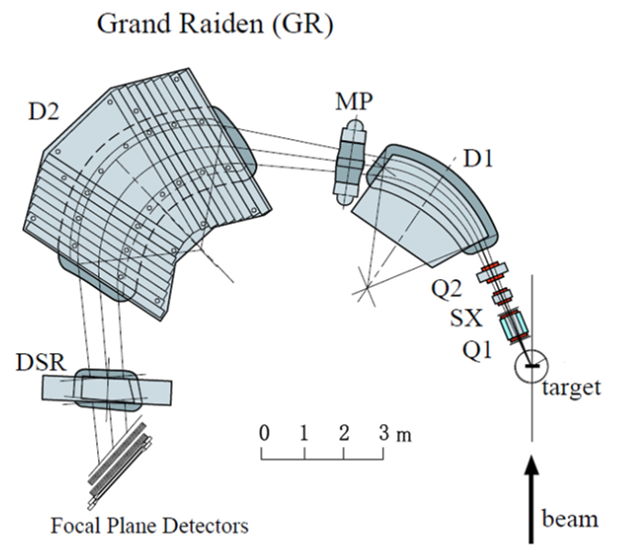Data
Neutron Transfer Studies on 25Mg and its Correlation to Neutron Radiative Capture Processes

Radiative neutron capture reactions play an important role in nuclear astrophysics. In some cases, direct neutron capture reaction studies are not possible and neutron transfer reactions have been suggested as a surrogate approach. A JINA-CEE led research team performed a detailed study of the 25Mg(d,p)26Mg reaction at a beam energy of 56 MeV, using the Grand Raiden spectrometer at RCNP (see Fig. 1) , as a surrogate reaction to the radiative neutron capture reaction 25Mg(n,γ)26Mg. A large number of neutron bound and unbound states between 10.6 and 12.1 MeV excitation energy in 26Mg were observed. Angular distribution analysis provided information about the orbital momentum transfer populating these levels (see Fig. 2). The comparison with resonances observed in the 25Mg(n,γ)26Mg reaction indicate that different levels in 26Mg are being populated through the two reaction mechanisms as demonstrated through an R-matrix calculation (see Fig. 3). This causes substantial discrepancies in the reaction-rate prediction. This result demonstrates that neutron transfer reaction studies may not necessarily lead to reliable predictions for neutron capture reaction rates.


